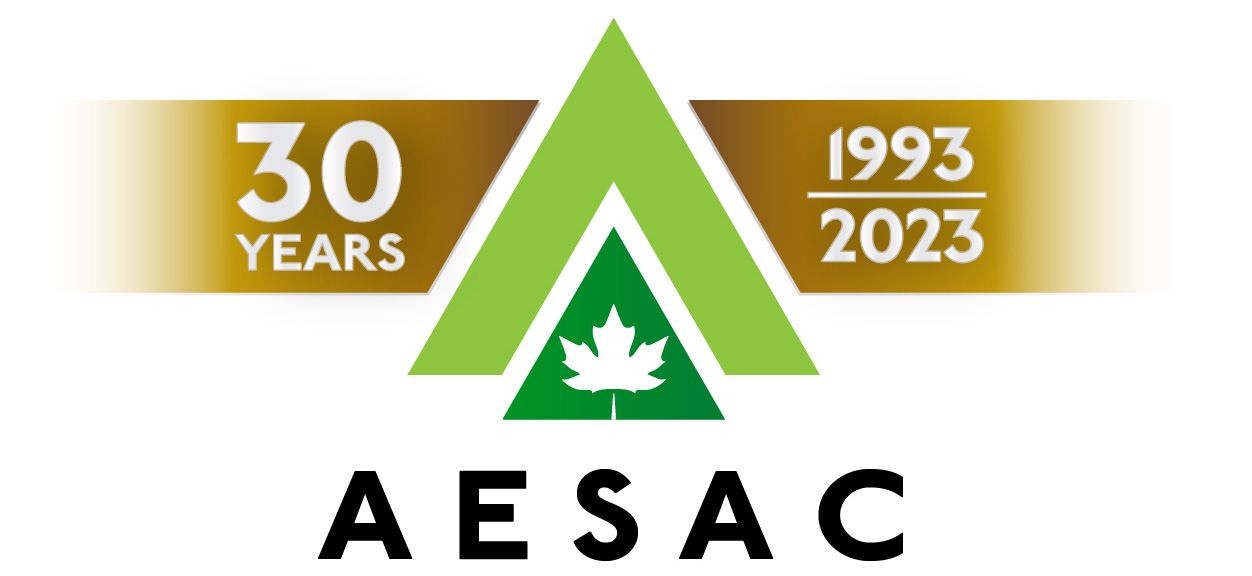- Home
- Training Courses
- Membership
- About Us
- Instructors Blog
- December 2023: All I Want For Christmas
- November 2023: ESA Report Reviews
- October 2023: Can AI Write an ESA Report?
- September 2023: Getting Paid... or Not
- August 2023: Take Me Back...
- July 2023: To Bid or Not To Bid
- June 2023: Selecting a Supplier
- April 2023: Phase 1 Problems, Part 3
- March 2023: Phase 1 Problems, Part 2
- February 2023: Phase 1 Problems, Part 1
- January 2023: Working Outside in Winter
- 2022 Blogs
- 2021 Blogs
- December 2021: Asbestos in your Home
- Sept 2021: Dirty Jars And Other Bad Things… Part 2
- August 2021: Dirty Jars And Other Bad Things… Part 1
- July 2021: How do you want that drawing to look? Part 2
- June 2021: How Did You Want That Drawing To Look? Part 1
- April 2021: So You Need a RSC... Part 2
- March 2021: So You Need a RSC... Part 1
- February 2021: What's In Your Toolbox? Part 2
- January 2021: What's In Your Toolbox? Part 1
- 2020 Blogs
- December 2020: A Day in the Life, Part 2
- November 2020: A Day in the Life, Part 1
- October 2020: Exploring Your Career Path
- September 2020: So You Want To Start Your Own Business - Part 2
- August 2020- So You Want to Start Your Own Business
- June 2020: Effective Communication
- May 2020: Tips For Working From Home
- April 2020: Conducting ESA’s During a Pandemic
- March 2020: It's Not Easy Being Green
- February 2020: Looking Ahead; Bold Predictions for the Next Decade
- January 2020: Looking Back; A Decade in Review
- 2019 Blogs
- 2018 Blogs
- 2017 Blogs
- 2016 Blogs
- 2015 Blogs
- Find an AESAC Member
Menu- Home
- Training Courses
- » Training Courses
- » Webinar Series
- » Calendar of Events
- » Course Registration
- » Course Instructors
- » Testimonials
- Membership
- » Become a Member
- » Certifications
- » Membership Search
- » Update Member Profile
- » Members Only
- » » Member Login
- » » Membership Renewal
- » » Create/Change Password
- » » CESA Certification Application
- About Us
- » About AESAC
- » Course Instructors
- » Contact Us
- Instructors Blog
- » December 2023: All I Want For Christmas
- » November 2023: ESA Report Reviews
- » October 2023: Can AI Write an ESA Report?
- » September 2023: Getting Paid... or Not
- » August 2023: Take Me Back...
- » July 2023: To Bid or Not To Bid
- » June 2023: Selecting a Supplier
- » April 2023: Phase 1 Problems, Part 3
- » March 2023: Phase 1 Problems, Part 2
- » February 2023: Phase 1 Problems, Part 1
- » January 2023: Working Outside in Winter
- » 2022 Blogs
- » » December 2022: Advice To My Younger Self
- » » October 2022: Pre-Purchase Due Diligence
- » » Sept 2022: Words Matter
- » » July 2022: Let Us Come To You
- » » April 2022: Due Diligence
- » » March 2022: Time Management
- » » February 2022: Spinning Augers... Part 2
- » » January 2022: Spinning Augers... Part 1
- » 2021 Blogs
- » » December 2021: Asbestos in your Home
- » » Sept 2021: Dirty Jars And Other Bad Things… Part 2
- » » August 2021: Dirty Jars And Other Bad Things… Part 1
- » » July 2021: How do you want that drawing to look? Part 2
- » » June 2021: How Did You Want That Drawing To Look? Part 1
- » » April 2021: So You Need a RSC... Part 2
- » » March 2021: So You Need a RSC... Part 1
- » » February 2021: What's In Your Toolbox? Part 2
- » » January 2021: What's In Your Toolbox? Part 1
- » 2020 Blogs
- » » December 2020: A Day in the Life, Part 2
- » » November 2020: A Day in the Life, Part 1
- » » October 2020: Exploring Your Career Path
- » » September 2020: So You Want To Start Your Own Business - Part 2
- » » August 2020- So You Want to Start Your Own Business
- » » June 2020: Effective Communication
- » » May 2020: Tips For Working From Home
- » » April 2020: Conducting ESA’s During a Pandemic
- » » March 2020: It's Not Easy Being Green
- » » February 2020: Looking Ahead; Bold Predictions for the Next Decade
- » » January 2020: Looking Back; A Decade in Review
- » 2019 Blogs
- » » November 2019
- » » September 2019
- » » August 2019
- » » July 2019
- » » May 2019
- » » March 2019
- » » February 2019
- » » January 2019
- » 2018 Blogs
- » » November 2018
- » » October 2018
- » » September 2018
- » » August 2018
- » » July 2018
- » » June 2018
- » » May 2018
- » » March 2018
- » » February 2018
- » » January 2018
- » 2017 Blogs
- » » April 2017
- » » June 2017
- » » August 2017
- » » September 2017
- » » December 2017
- » 2016 Blogs
- » » October 2016
- » » September 2016
- » » August 2016
- » » July 2016
- » » June 2016
- » » March 2016
- » » January 2016
- » » December 2016
- » » November 2016
- » 2015 Blogs
- » » April 2015
- » » July 2015
- » » September 2015
- » » October 2015
- » » December 2015
- Find an AESAC Member
I recently had a potential client request a quote for an “Environmental Review” for a property purchase that was due to close in a few days. They didn’t know exactly what they needed, and only just realized that they needed to satisfy a condition of their purchase agreement that was included by their realtor. Unfortunately this can be a common occurrence for less experienced buyers of commercial, industrial and some residential properties. I took time to explain the different formats of ‘reviews’ to consider, based on their objectives of completing pre-purchase environmental due diligence, specifically a Phase I Environmental Site assessment (ESA). Most environmental consultants should fully understand the variety of ESA that are conducted across Canada, but for those stakeholders that are unfamiliar with the process, here are some of the basic formats to consider.
Geographical Location
Across most of Canada, the accepted format for conducting Phase I ESA is the Canadian Standards Association – CSA Standard Z768-01 (re-affirmed 2022). While there are regional differences, a properly conducted CSA-format ESA should satisfy most purchasers and lenders for due diligence purposes. There are some minor technical differences in several provinces, and in Ontario there is another type of ESA format that may be required (more on that below). Examples of some of the provincial variances include: mandated records search distances (AB and BC); specific mandated records review (AB, BC, ON, QC, NB), differences in terminology (in BC a Phase I ESA is referred to as a Stage I PSI, or Preliminary Site Investigation – and BC also has additional reporting requirements for certain property transactions); and specified professional or licensing qualifications in some cases when regulatory reporting is required (AB, QC, ON). Stakeholders and practitioners should be fully aware of all local and/or regulatory requirements before commencing any ESA.Oil and Gas Sites
In our oil-producing provinces (AB, BC SK) there are specific regulatory requirements for conducting Phase I ESA on Upstream Oil and Gas Sites (including: proposed and producing oil and gas well sites, drilled or abandoned wells, disposal wells, battery sites, pipelines, associated facilities, and oil sands & heavy oil processing). Although based on the CSA Standard, there are several key differences in conducting a Phase I ESA for an Oil and Gas property, including: mandated research items and Freedom-of-Information searches, reporting obligations, and specific licensing requirements for professional sign-off. Local knowledge, experience and familiarity with specific provincial regulations is vital for Oil & Gas ESA practitioners.It's Different in Ontario (or it can be)…
In Ontario, there is another layer of complexity to consider. When a property is proposed to be redeveloped to a more sensitive land use (e.g. industrial to commercial, industrial/commercial to residential, etc.) a Record of Site Condition is required to be submitted for acknowledgement to the provincial environment ministry. A record of Site Condition (RSC) can also sometimes be required by a local municipality as part of their approvals process, even when there is no change to a more sensitive land use. In these cases, a different type of ESA, is needed, specifically a Phase One ESA (not a Phase I ESA), conducted in strict accordance with Ontario Regulation 153/04, as amended (also known as the ‘Brownfields’ or ‘MOE’ guidelines). This ESA format is very strictly regulated and is quite different than the CSA Standard. Key differences include: specific terminology and wording; mandatory report formats; mandated records review and search distances; defined contaminating activities and areas of environmental concern; specific and mandated triggers for further investigation (i.e. Phase Two ESA); and requirements for work to be completed and signed off by a “Qualified Person” or QP (specifically limited to Professional Engineers and Geoscientists licensed and insured to practice in Ontario). Due the very stringent requirements of the governing legislation, there can sometimes be less room for professional judgement when it comes to recommendations for, or against further site investigation. The RSC format ESA does not include the assessment of potentially hazardous materials such as Asbestos, Lead or other ‘Special Attention Items” normally included in a CSA format ESA. The RSC compliant report generally costs more (sometimes a lot more) and takes longer to complete than a comparable CSA format report, and you still have to complete and submit the actual RSC along with the extra work, time-frame, documentation, costs and obligations that entails. Because of this, it is extremely important to determine whether an RSC is needed before scoping and costing any ESA in Ontario.
Bill Leedham, P. Geo., CESA
Bill is the Head Instructor and Course Developer for the Associated Environmental Site Assessors of Canada (www.aesac.ca); and the founder and President of Down 2 Earth Environmental Services Inc. You can contact Bill at info@down2earthenvironmental.ca
Training Courses
Membership
About Us
Contact UsCopyright (c) 2024 Associated Environmental Site Assessors of Canada; AESAC Inc.



